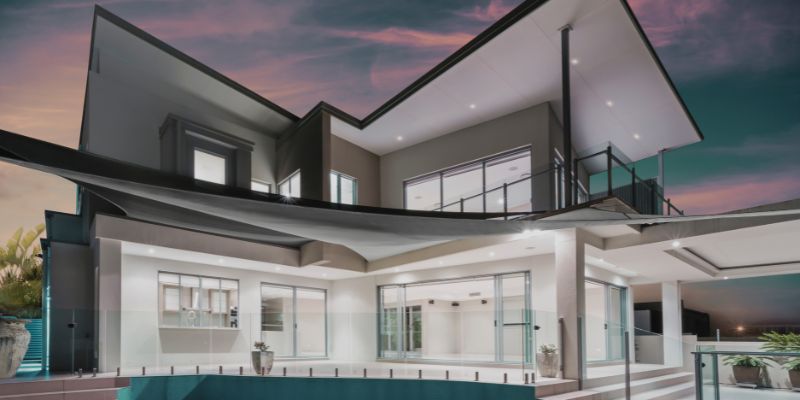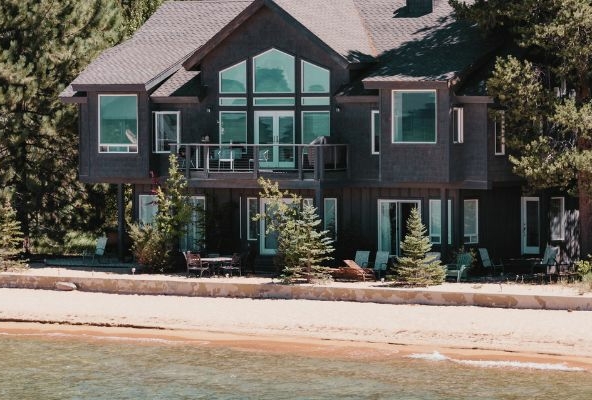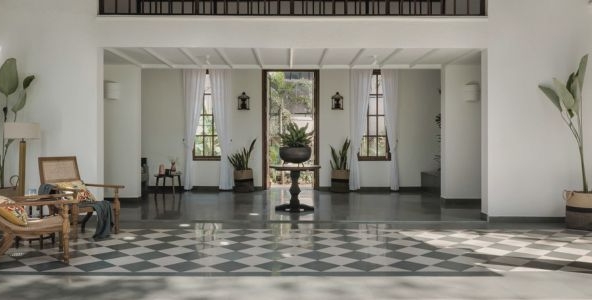In today’s rapidly evolving real estate market, investors are increasingly looking for alternative asset classes to diversify their portfolios and generate consistent returns. One such asset class that has gained significant traction in recent years is the rent-yielding luxury second home. These properties not only offer the allure of luxury living but also provide an opportunity for passive income through rentals while appreciating in value over time. This combination of capital appreciation and rental income makes luxury second homes an attractive and smart investment choice for those looking to expand their asset portfolio.
In this article, we will explore how luxury second homes can become a powerful income-generating asset, how they appreciate in value, and why they are gaining popularity as a premium investment option.
Understanding Rent-Yielding Luxury Second Homes
A rent-yielding luxury second home is a high-end property located in a prime destination that is rented out to generate income when not in use by the owner. These homes are often situated in desirable vacation spots or metropolitan cities, which attract a steady flow of affluent tourists or short-term tenants. Owners can choose to occupy the property for part of the year and rent it out during other times, maximizing its utility and financial returns.
Unlike traditional rental properties, luxury second homes offer a unique combination of lifestyle benefits and financial rewards. Owners enjoy the luxury of owning a vacation home in a sought-after location, while simultaneously leveraging the property to generate passive income through rentals.
Why Luxury Second Homes Are a Smart Investment
1. Generating Passive Income Through Rentals
One of the key advantages of owning a luxury second home is the ability to generate passive income by renting it out when not in use. In popular vacation destinations or cities with high demand for short-term rentals, luxury properties can command premium rental rates. Platforms like Airbnb, Vrbo, and Booking.com have made it easier than ever for property owners to market their homes to a global audience of potential renters.
According to data from AirDNA, short-term rental properties in major markets such as Dubai, London, and New York have seen occupancy rates of over 80%, with average daily rates ranging from $300 to $1,000, depending on the property and location. This demonstrates the high demand for luxury rental properties and the potential for significant passive income. For example, a luxury villa in a vacation hotspot like the French Riviera or the Caribbean can generate hundreds of thousands of dollars in rental income annually, depending on the seasonality and occupancy rates.
By investing in a luxury second home, owners can benefit from this rental income without having to manage the property on a daily basis. Many property management companies and rental agencies offer turnkey solutions, handling everything from marketing to guest management, ensuring that the property is well-maintained and generating consistent income for the owner.
2. Capital Appreciation and Long-Term Value Growth
In addition to rental income, luxury second homes have historically proven to appreciate in value over time, making them an attractive long-term investment. Prime real estate markets, particularly in sought-after locations such as Dubai, New York, and the French Alps, have seen steady price increases over the years. This appreciation is driven by a combination of factors, including limited supply, increasing demand from high-net-worth individuals, and the overall growth of the luxury real estate market.
A report by Knight Frank indicates that the global luxury property market grew by 6.7% in 2021, with certain regions experiencing even higher levels of price appreciation. For instance, Los Angeles saw luxury home prices increase by 19% over the same period, while Miami recorded a 16% growth. This data demonstrates that investing in luxury real estate can lead to significant capital appreciation over the long term, especially in high-demand areas.
Furthermore, the global luxury real estate market is projected to grow at a compound annual growth rate (CAGR) of 5.4% between 2022 and 2030, according to Grand View Research. This long-term value growth, coupled with the ability to generate rental income, makes luxury second homes a compelling investment choice for those seeking to diversify their portfolio and achieve stable, long-term returns.
3. Portfolio Diversification and Risk Mitigation
Investing in a luxury second home also provides portfolio diversification, which is crucial for mitigating risk. In times of market volatility, real estate is often seen as a safe-haven asset, as it tends to be less affected by short-term market fluctuations compared to stocks or bonds. Luxury second homes, in particular, are considered a stable asset class because they cater to a niche market of high-net-worth individuals, whose demand for premium properties remains relatively resilient, even during economic downturns.
By adding a rent-yielding luxury second home to their portfolio, investors can reduce their exposure to more volatile asset classes while still enjoying the potential for both income generation and capital appreciation. This diversification can help to mitigate the overall risk of an investment portfolio and provide a hedge against inflation, as real estate values typically increase over time.
4. Tax Benefits and Wealth Preservation
In many regions, owning a second home can come with tax benefits that further enhance the financial appeal of this investment. Depending on the country and jurisdiction, property owners may be able to deduct expenses related to property maintenance, mortgage interest, and property management fees from their taxable income. Additionally, certain countries offer favorable tax treatments for rental income or capital gains, making luxury second homes an attractive vehicle for wealth preservation and growth.
For example, in countries like the United States, investors can take advantage of 1031 exchanges, which allow them to defer capital gains taxes when selling one investment property and purchasing another. Similarly, in regions such as Dubai, there are no capital gains taxes on real estate transactions, further incentivizing investment in luxury properties.
By leveraging these tax advantages, investors can not only preserve their wealth but also maximize their returns on investment in a luxury second home.
Trends Driving the Popularity of Luxury Second Homes
Several key trends are driving the growing popularity of luxury second homes as a viable and lucrative investment class:
- Remote Work Revolution: The rise of remote work has led many individuals to seek vacation homes in desirable locations, where they can balance work and leisure. This has increased demand for luxury second homes that offer premium living experiences.
- Sustainability and Wellness: There is a growing trend towards sustainability and wellness-focused luxury properties, which offer environmentally friendly designs and features that promote health and well-being. These homes often command premium prices and attract high-end clientele looking for unique lifestyle experiences.
- Fractional Ownership Models: New fractional ownership and co-ownership models are making luxury second homes more accessible to a broader range of investors, allowing them to own a share of a premium property without the full financial commitment. This trend has increased demand for rent-yielding luxury properties in prime destinations.
Conclusion
Investing in a rent-yielding luxury second home is a smart and strategic decision for individuals looking to diversify their portfolios, generate passive income, and benefit from long-term property appreciation. With increasing demand for luxury properties, strong rental yields, and stable value growth, luxury second homes are becoming an attractive asset class for savvy investors. By combining the lifestyle benefits of owning a luxury vacation home with the financial advantages of rental income and capital appreciation, these properties offer a unique and rewarding investment opportunity.




